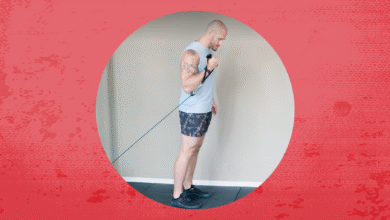In South Africa, traditional healers join the fight against HIV. Stigma remains high in rural areas

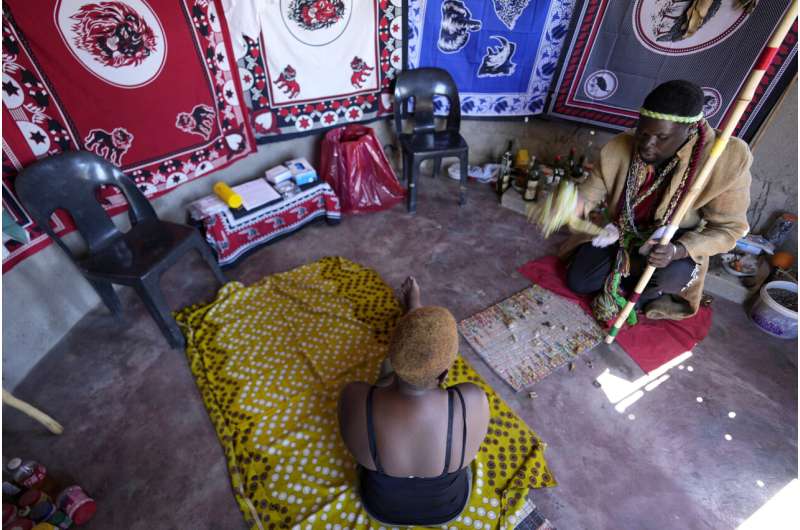
The walls of Shadrack Mashabane’s hut in the rural South African town of Bushbuckridge are covered with traditional fabrics, with a small window the only source of light. What stands out among the herbs and medicines in glass bottles is a white box containing an HIV testing kit.
Mashabane is one of at least 15 traditional healers in the town who, in a pilot study, have been trained by University of Witwatersrand researchers to conduct HIV testing and counseling in an effort to ensure as many South Africans as possible know their status.
It’s part of the largest known effort in the country to involve traditional healers in a public health goal and study the results. Later this year, at least 325 other healers will undergo the training and become certified HIV counselors. Researchers will compare rates of HIV testing by healers and clinics.
Most traditional healers were already knowledgeable about HIV—some from personal experience—and were eager to get involved, researchers said.
South Africa has one of the highest rates of HIV in the world. Stigma remains in many communities around the disease and its treatment—even though HIV antiretroviral medication and pre-exposure prophylaxis are free. Concern about privacy at clinics also keeps people from seeking help.
Many people in rural areas see traditional healers as their first point of contact for illnesses, and the project hopes they can help change attitudes.
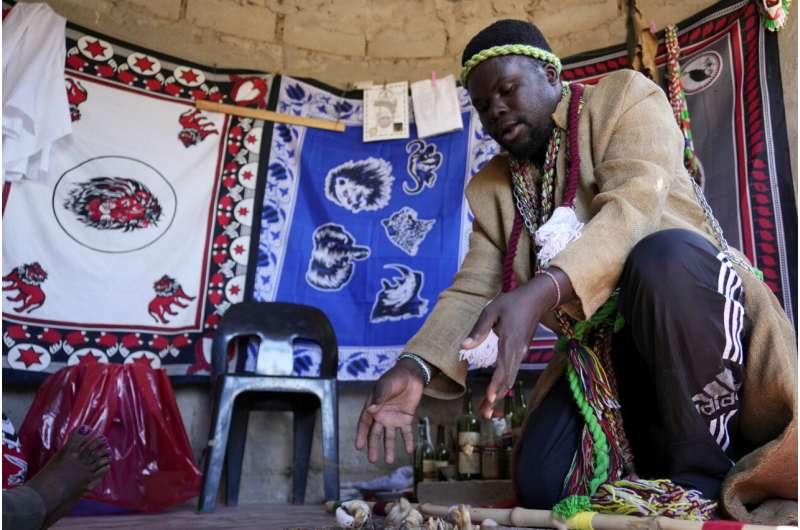
South Africa’s large younger population is a special concern. A government study released in December showed that people living with HIV had fallen from 14% in 2017 to 12.7% in 2022, but HIV prevalence rose among girls between 15 and 19, a phenomenon largely attributed to older men sleeping with them.
Around 2,000 traditional healers operate in the Mpumalanga province town of Bushbuckridge, home to about 750,000 people, providing traditional and spiritual services.
Mashabane said patients at first found it difficult to believe he was offering HIV testing—a service they had long expected to be available only at health clinics.
“Many were not convinced. I had to show them my certificate to prove I was qualified to do this,” he said.
The process includes the signing of consent forms to be tested, along with a follow-up with Mashabane to ensure that patients who test positive receive their treatment from the local clinic.
-
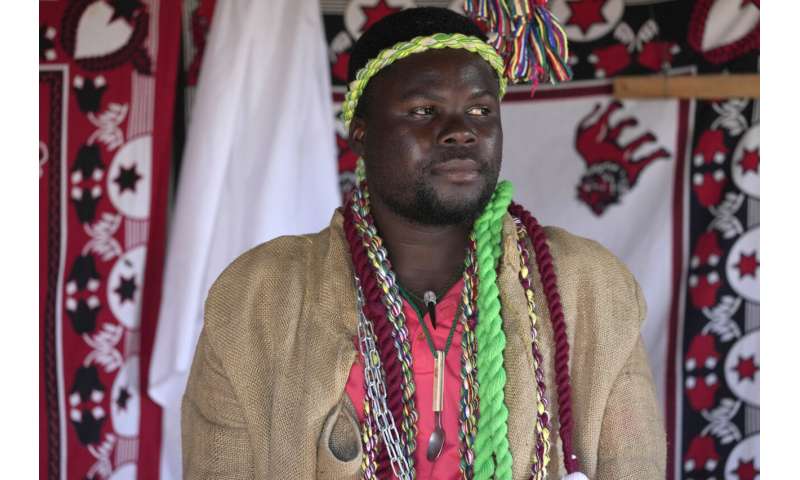
Traditional healer Shadrack Mashabane inside his hut in Bushbuckridge, South Africa, Thursday, May 9, 2024. While South Africa has made strides in fighting HIV, prevalence remains high and stigma is widespread in many communities with researchers hoping the relationship of trust between villagers and traditional healers will bring more people to HIV testing, counseling and care. Credit: AP Photo/Themba Hadebe
-
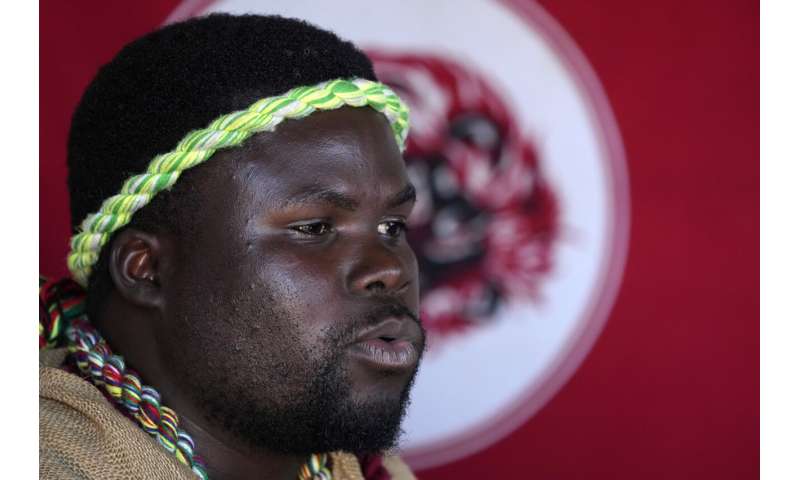
Traditional healer Shadrack Mashabane is shown inside his hut in Bushbuckridge, South Africa, Thursday, May 9, 2024. While South Africa has made strides in fighting HIV, prevalence remains high and stigma is widespread in many communities with researchers hoping the relationship of trust between villagers and traditional healers will bring more people to HIV testing, counseling and care. Credit: AP Photo/Themba Hadebe
-
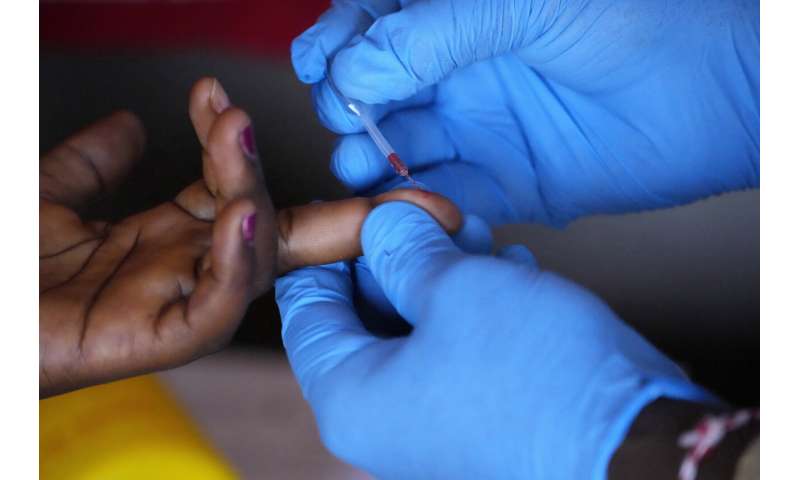
Traditional healer Shadrack Mashabane takes a drop of blood for a rapid HIV blood test inside his hut in Bushbuckridge, South Africa, Thursday, May 9, 2024. While South Africa has made strides in fighting HIV, prevalence remains high and stigma is widespread in many communities with researchers hoping the relationship of trust between villagers and traditional healers will bring more people to HIV testing, counseling and care. Credit: AP Photo/Themba Hadebe
-
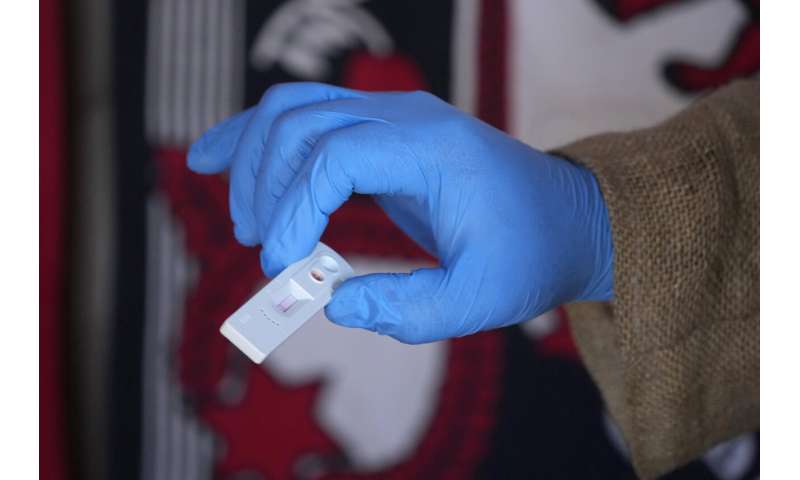
Traditional healer Shadrack Mashabane reads results from a rapid HIV test in Bushbuckridge, South Africa, Thursday, May 9, 2024. While South Africa has made strides in fighting HIV, prevalence remains high and stigma is widespread in many communities with researchers hoping the relationship of trust between villagers and traditional healers will bring more people to HIV testing, counseling and care. Credit: AP Photo/Themba Hadebe
-
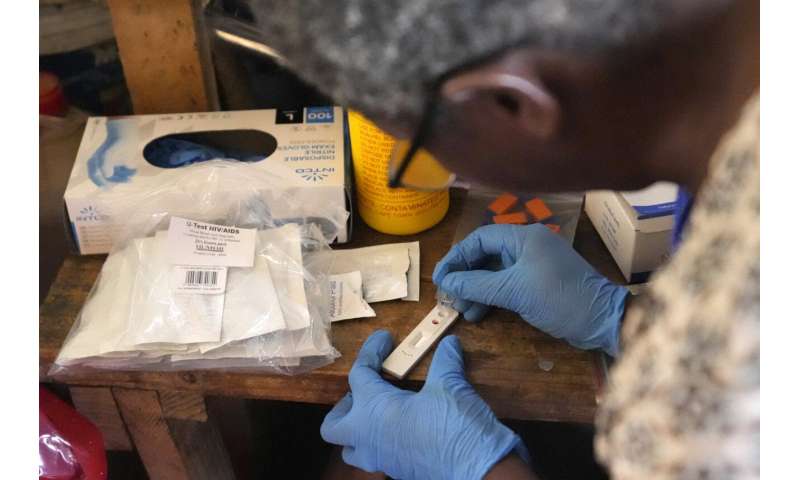
Traditional healer Florence Khoza reads results from a rapid HIV blood test in Bushbuckridge, South Africa, Thursday, May 9, 2024. While South Africa has made strides in fighting HIV, prevalence remains high and stigma is widespread in many communities with researchers hoping the relationship of trust between villagers and traditional healers will bring more people to HIV testing, counseling and care. Credit: AP Photo/Themba Hadebe
-
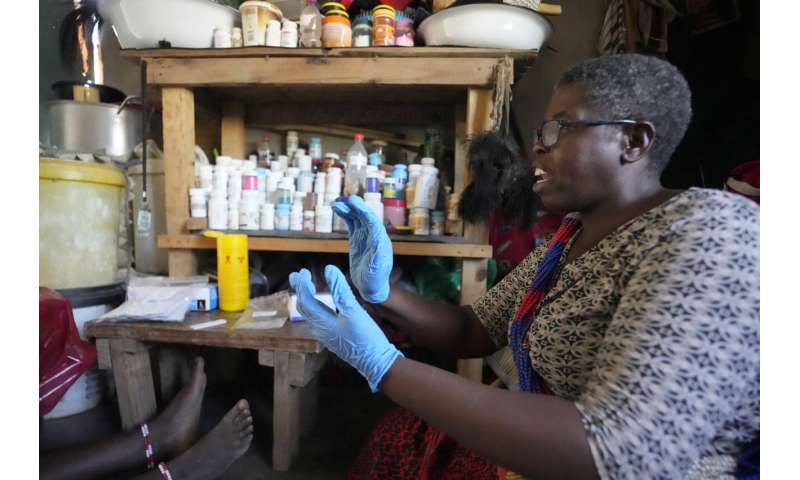
Traditional healer Florence Khoza talks to a patient before conducting a rapid HIV blood test in Bushbuckridge, South Africa, Thursday, May 9, 2024. While South Africa has made strides in fighting HIV, prevalence remains high and stigma is widespread in many communities with researchers hoping the relationship of trust between villagers and traditional healers will bring more people to HIV testing, counseling and care. Credit: AP Photo/Themba Hadebe
-
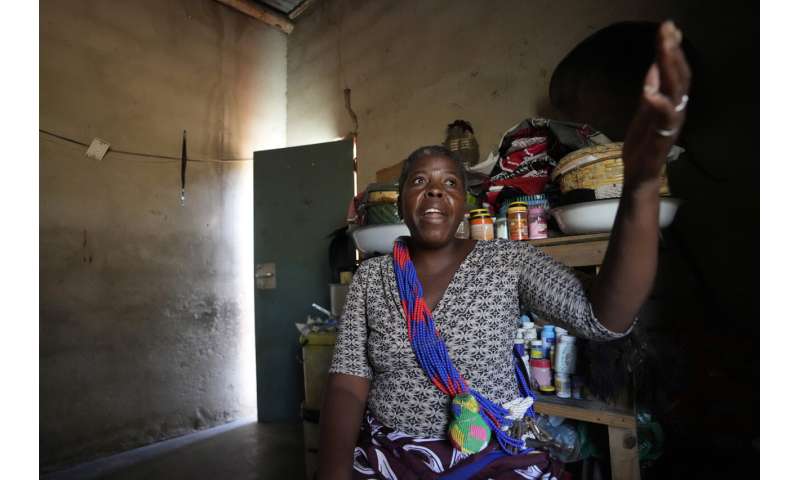
Traditional healer Florence Khoza talks to a patient before conducting a rapid HIV blood test in Bushbuckridge, South Africa, Thursday, May 9, 2024. While South Africa has made strides in fighting HIV, prevalence remains high and stigma is widespread in many communities with researchers hoping the relationship of trust between villagers and traditional healers will bring more people to HIV testing, counseling and care. Credit: AP Photo/Themba Hadebe
He said breaking the news to a patient who has tested positive for HIV is not that difficult because the illness can be treated with readily available medication. But in many cases, he has to accompany the patient to the clinic “to make it easier for them.”
Florence Khoza is another traditional healer who has been trained to test for HIV. She said risky sexual behavior is common. She often dispenses traditional herbs and medication to treat gonorrhea, but now she goes further by advising patients to test for HIV.
“I tell them it is in their best interest,” she said.
Khoza said many patients fear going to the clinic or hospital and having other community members see them collecting HIV treatment.
“In many cases I collect the HIV medication on their behalf,” she said.
Ryan Wagner, a senior research fellow with the study, said testing and treating via traditional medicine practitioners could “ultimately lead to the end of new HIV cases in communities such as rural Mpumalanga, which has some of the largest HIV burden globally.”
Researchers hope their findings will inspire South Africa’s government to roll out such training across the country.
© 2024 The Associated Press. All rights reserved. This material may not be published, broadcast, rewritten or redistributed without permission.
Citation:
In South Africa, traditional healers join the fight against HIV. Stigma remains high in rural areas (2024, June 16)
retrieved 16 June 2024
from https://medicalxpress.com/news/2024-06-south-africa-traditional-healers-hiv.html
This document is subject to copyright. Apart from any fair dealing for the purpose of private study or research, no
part may be reproduced without the written permission. The content is provided for information purposes only.



